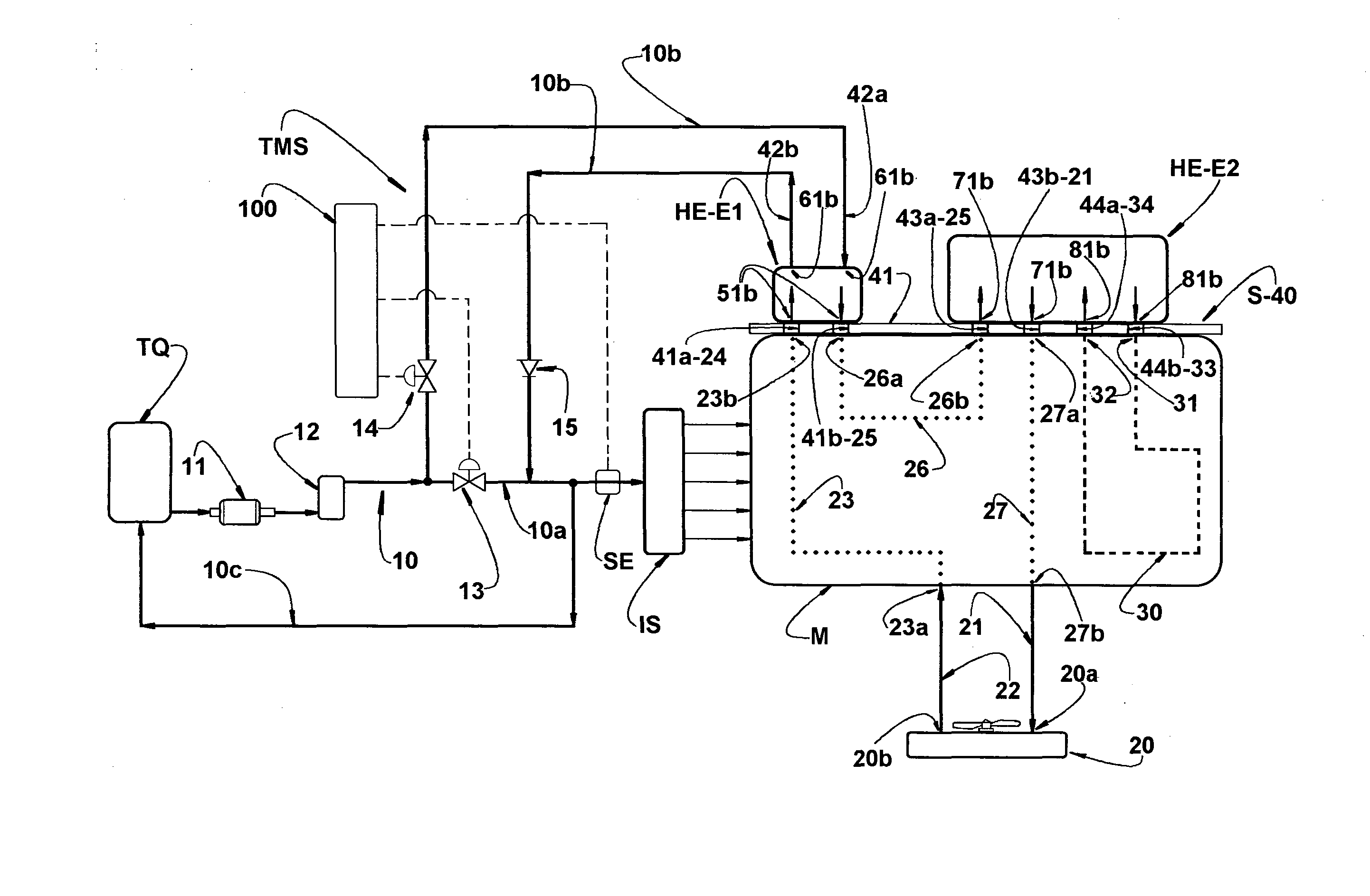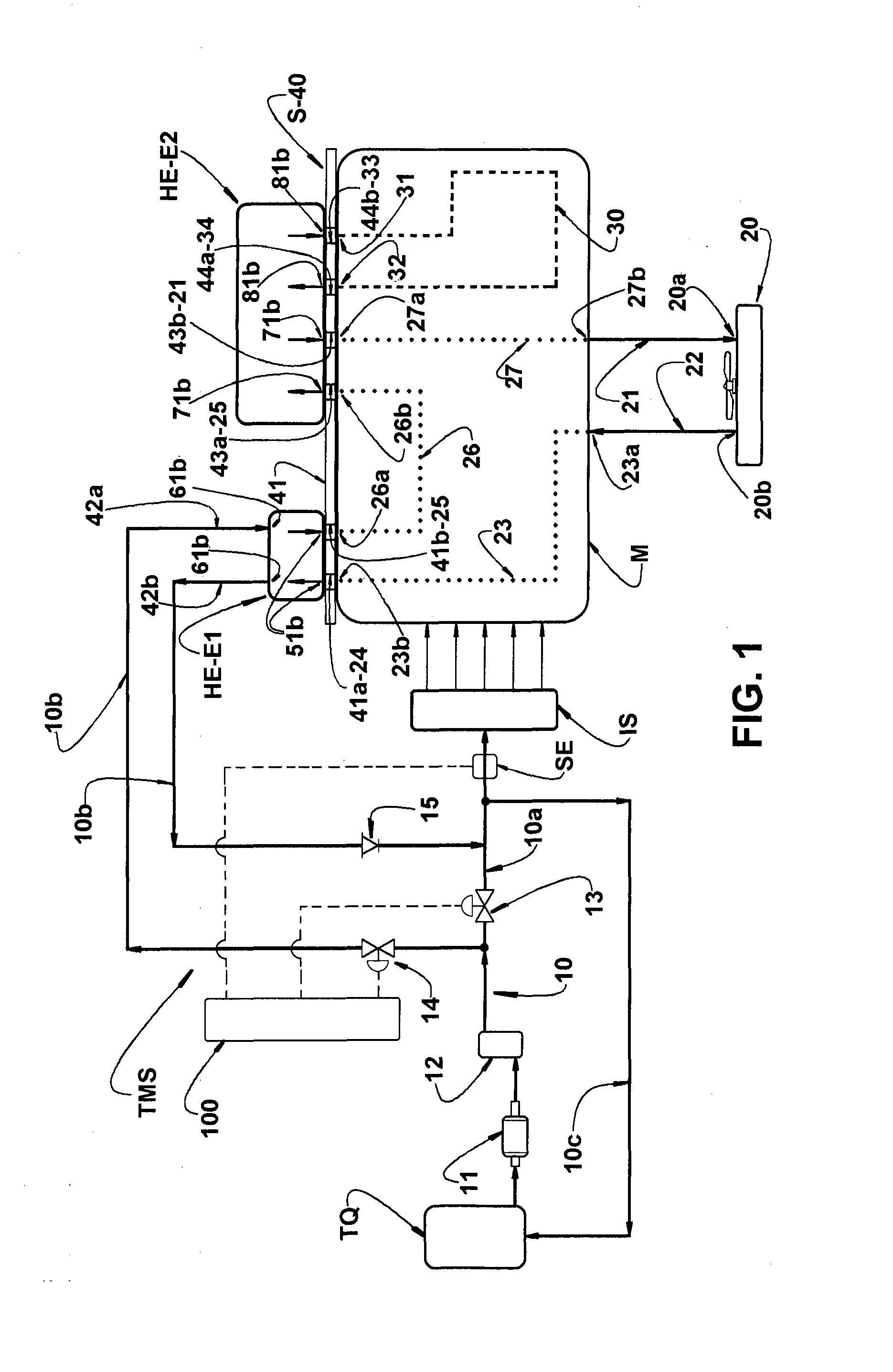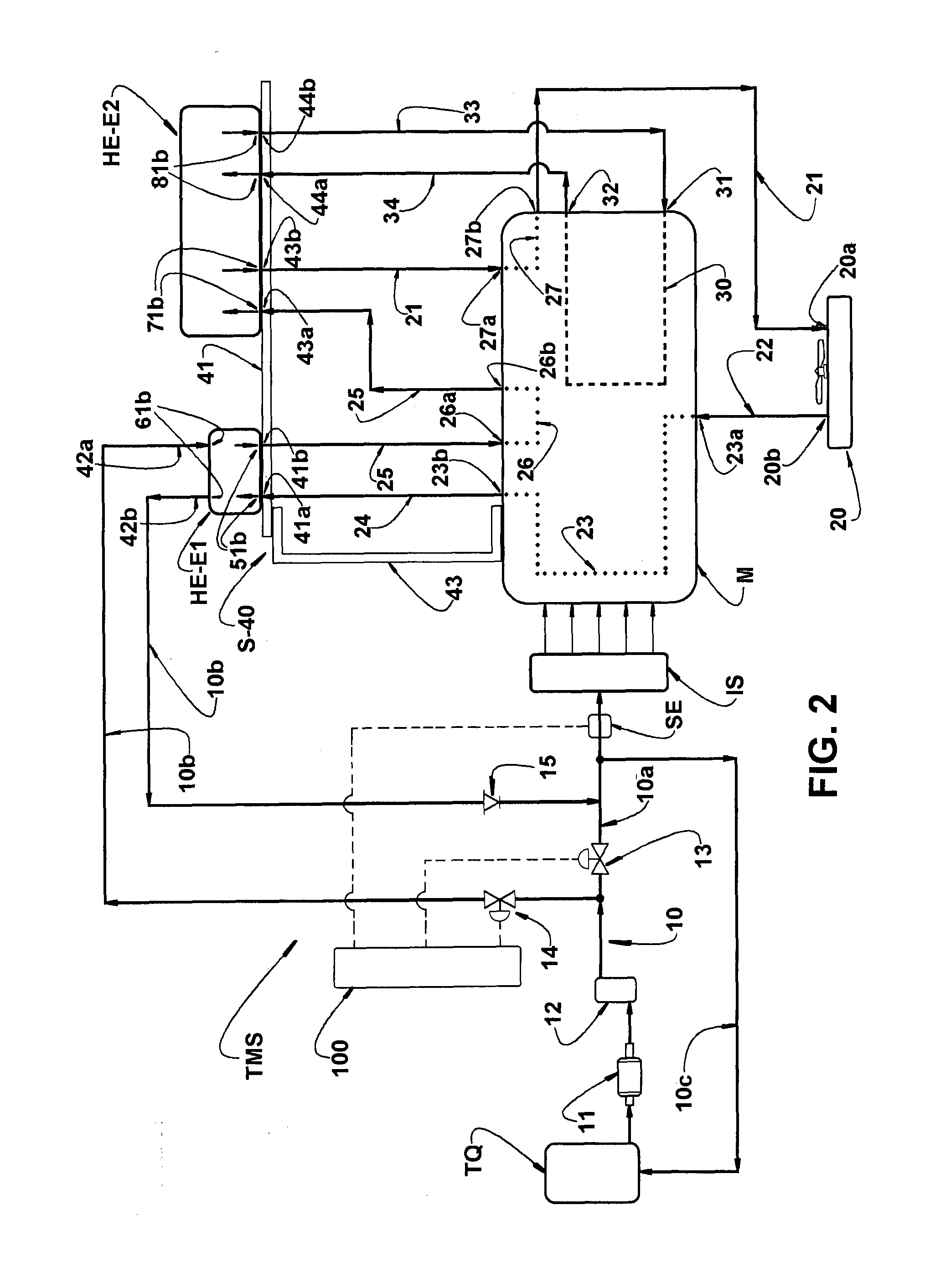Heat exchanger for the feeding of fuel in internal combustion engines
a technology of heat exchanger and internal combustion engine, which is applied in the direction of engine cooling apparatus, stationary plate conduit assembly, fuel treatment, etc., can solve the problems of incorrect operation of engine components, loss of efficiency as thermal exchanging fluid, and energy lost in the transfer of heat from the engine to the radiator water, so as to reduce fuel consumption and environmental damage, simple, efficient and easy-to-install construction, the effect of double energy us
- Summary
- Abstract
- Description
- Claims
- Application Information
AI Technical Summary
Benefits of technology
Problems solved by technology
Method used
Image
Examples
Embodiment Construction
[0023]As mentioned above and illustrated in the attached drawings, the heat exchanger HE of the invention is applied to an internal combustion engine M, using a single fuel or a varying mixture of fuels presenting different vaporization temperatures, as is the case of “flex” engines which use, for example, gasoline, ethanol or a mixture thereof in different proportions. The heat exchanger HE of the invention was developed to operate together with a thermal management system TMS for the feeding of fuel during the entire vehicle operation, in order to maintain the fuel being supplied to the engine M at an optimized temperature for efficient combustion, lower than that of the vaporization point. The thermal management system TMS may be defined, for example, as described in prior patent application BR10 2013 004382-6, of the same applicant.
[0024]In FIGS. 1 and 2 of the attached drawings are illustrated two possible assembly embodiments of the heat exchanger HE, in a thermal management s...
PUM
 Login to View More
Login to View More Abstract
Description
Claims
Application Information
 Login to View More
Login to View More - R&D
- Intellectual Property
- Life Sciences
- Materials
- Tech Scout
- Unparalleled Data Quality
- Higher Quality Content
- 60% Fewer Hallucinations
Browse by: Latest US Patents, China's latest patents, Technical Efficacy Thesaurus, Application Domain, Technology Topic, Popular Technical Reports.
© 2025 PatSnap. All rights reserved.Legal|Privacy policy|Modern Slavery Act Transparency Statement|Sitemap|About US| Contact US: help@patsnap.com



